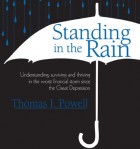Retirement Planning Meets Real Estate (And Really Hit it Off) You are never too young to start saving for retirement. On the other hand, only your specific life circumstances determine if you’re too old. Although earlier is best when it comes to retirement planning, later is still better than never. Whenever you choose to start, it is important to know your options and limitations.
It is difficult to find an employer that offers a consistent pension plan. Those approaching retirement rely primarily on IRAs to assist in saving for retirement. However, most people never take control of their retirement accounts and passivity can be costly for your nest egg. The majority of IRA money in our country is invested in stocks, bonds and mutual funds. According to MSNMoney.com, about 97 percent of IRA money is dedicated to these traditional investments. That means only 3 percent of our IRA money is dedicated to alternative investments, such as real estate, that have the ability to produce higher returns.
The rules governing allowable investments by IRAs only exclude three classes of investments: collectibles (such as artwork, gems, antiques and most coins), life-insurance and S corporations. All other types of investments are permitted, which makes for seemingly endless investment options. One trend that is beginning to gain popularity is using IRA money to invest in real estate.
Investing in real estate through an IRA widens the range of alternative investments available for individuals planning their retirement. Introducing real estate into your retirement portfolio has obvious benefits. For one, it can act as a means to diversify your portfolio, which can help to hedge against the volatility in the stock market or government-backed investments. Also, for those who are experienced in real-estate investing, or those who seek help from a professional who is, real-estate investments have the potential to protect against principal loss. Real estate can also generate better-than-market-rate returns through income production and capital gains. With the help of a Registered Investment Advisor, your income and capital gains could also be stuffed back into your IRA either tax-deferred (as with a traditional IRA) or tax-free (as with a Roth IRA).
Arguably, the easiest way to incorporate real estate into your retirement plans is to have your IRA purchase the asset and you treat it strictly as an investment. This means you cannot use the property for personal reasons, which excludes the options of purchasing and frequenting a vacation home or purchasing property from relatives. There are no complex issues involved when you treat the asset only as an investment as long as your IRA pays cash for it. But, this is not a feasible option for everyone.
If you have to leverage a mortgage, things get a bit more complicated. For instance, you cannot personally guarantee a loan for your IRA. Also, your IRA will pay tax on something called Unrelated Debt Financed Income, which is the income that can be attributed to the leveraged portion of the loan. If you are not well-versed in real-estate investing, you can run into some major tax complications when trying to use your retirement accounts to purchase real estate. I highly recommend seeking the help of a professional for two specific reasons. First, a professional helps eliminate headaches and complexity. Second, he or she can help to ensure that your retirement account has the best chance to bloom and remain fruitful throughout your entire retirement.
To help simplify the complex process of introducing real-estate investments into your retirement plans, I have uploaded an e-book that you can download for free at www.ThePowellPerspective.com. Inside the “Real Estate Risk and Retirement Planning Pt. 1” e-book you will find:
– How to decide if real-estate investments are right for you right now
– Helpful guidance for introducing real-estate investments into your retirement plans
– How to navigate the different options you have when it comes to real-estate investing
– The importance of holding a diversified retirement portfolio
– How to use real-estate investments as a hedge against inflation
I have compiled information from a variety of sources to create an e-book that can help readers take the unknown out of a complex topic. It is my hope with this two-part e-book, that readers will find the information they need to take control of their retirement planning and stop putting it off. Retirement can be filled with relaxation, travel and free time to complete a number of your life goals. There is no reason to be worried about your finances later on in life when you can easily take the right steps toward financial security today.
All My Best,
Thomas J. Powell
For the free eBook, please visit www.ThePowellPerspective.com







